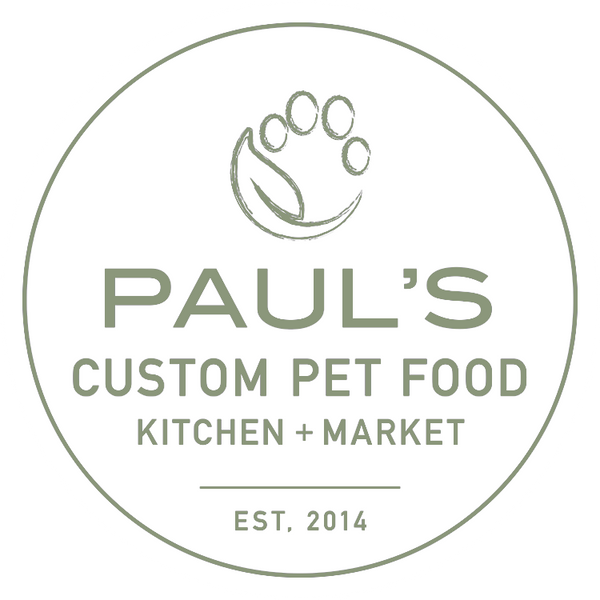It's not often that companies publish internal communications, however, this recent email from management to staff at PCPF so succinctly presents our position and approach to food safety -- generally and vis a vis the H5N1 virus -- that we see no need to revise it.
Please note that this information is derived directly from the USDA and ServSafe regulations. Our team is ServSafe certified (see our production manager's certificate of achievement as an example).

We encourage anyone to contact us with any questions about the virus or any concerns you might have.
Hi Team,
Please read this email in its entirety and reply that you have done so.
As part of our ongoing commitment to the highest standards of food safety, we want to provide an important update regarding the avian flu virus and reinforce best practices for handling and cooking raw poultry products. Ensuring the safety of the food we produce for pets is critical, and adhering to these procedures will help mitigate any risk associated with avian flu and other foodborne pathogens.
Avian Flu and Food Safety
The avian flu (H5N1) virus is primarily found in infected poultry and can be transmitted through direct contact with raw chicken, turkey, or its products -- i.e. eggs. While the virus is rare in U.S. pets and human cases, there have been at least two reported incidents involving cats. These cats consumed raw pet food.
We must continue to take every precaution to prevent contamination in our operations. Cooking poultry to an internal temperature of 165°F (74°C) is crucial in eliminating this virus and other harmful pathogens, making the food safe for pets and ultimately for their humans (including PCPF team members).
Why Cooking to 165°F is Critical
Cooking poultry to 165°F (74°C) ensures that harmful pathogens, including the avian flu virus, are destroyed. It is important to note that the poultry must cook at 165°F to effectively kill any viruses or bacteria. Using a food thermometer is the most reliable way to verify that this temperature has been reached. Please make sure to check the internal temperature of poultry products during the cooking process, including our bone broths.
ServSafe Guidelines for Handling Raw Chicken
It’s essential to follow ServSafe standards when handling raw poultry to prevent contamination and ensure safety. Here are the key guidelines:
- Storage of Raw Chicken and Turkey: Always store raw poultry in the refrigerator or freezer immediately upon arrival. Make sure raw chicken is stored on the lowest shelf to prevent juices from contaminating other foods. This includes chicken breast on trays being frozen for brittle slicing.
- Separation: Never store raw poultry next to ready-to-eat foods. Keep raw meat in tightly sealed containers to avoid leakage.
- Thawing: Thaw frozen poultry in the refrigerator or under cold running water, but never at room temperature.
Dishwashing Procedures for Raw Poultry
Proper dishwashing procedures are crucial for reducing cross-contamination risks. Here’s a reminder on how to properly wash and sanitize dishes, utensils, and surfaces that come in contact with raw poultry:
1. Keep Raw Dishes on the Designated Cart:Always use the designated cart for raw poultry-related items until they are cleaned.
2. Dishwashing Procedure:
Wash: Scrub all dishes, cutting boards, and utensils used with raw poultry in hot soapy water.
3. Bleach and Sanitize:
After washing, sanitize all items using a bleach solution. Allow the sanitized items to sit for a few minutes to ensure thorough disinfection.
4. Rinse:
After sanitizing, rinse all items thoroughly with clean, hot water.
5. Sanitize Sink Bays:
After washing any items used for raw poultry, bleach all sink bays to prevent any residual contamination. Use a bleach solution and allow it to sit for at least one minute before rinsing.
6. Replace Water and Bleach in Buckets:
After cleaning countertops or dishes that have come in contact with raw poultry, replace the bleach solution and kitchen towel in your buckets. This ensures that cleaning solutions remain effective and free from contamination.
Why These Procedures Matter
By following these procedures, we significantly reduce the risk of contamination and the spread of harmful pathogens, including the avian flu virus. Proper cleaning and sanitizing protocols help ensure the safety and quality of the pet food we produce, protecting our products, our customers, and our team members.
Your Role in Food Safety
Your attention to detail and dedication to following these safety protocols is essential for keeping our products safe and ensuring the health of pets and customers. If you have any questions regarding these procedures, please ask.
Thank you.


1 comment
I have read your statement. Very well written and clear with the facts. Thanks for the update.